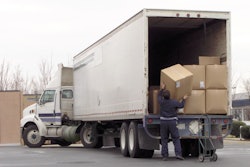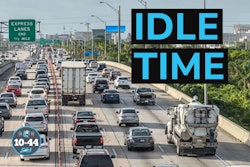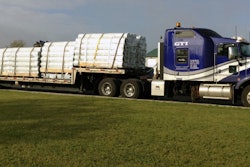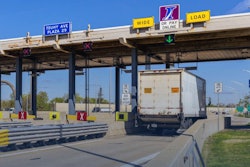Nuclear verdicts are a hot topic in the trucking industry today. These judgments, exceeding $10 million, have skyrocketed to an average of $31.8 million.
Understanding safety and compliance, and their role in the operations of a successful trucking company, is critical to prevent accidents and avoid the risk of a catastrophic court settlement.
Pre-crash action matters more than ever. Forward-thinking organizations are developing practices and adopting technology to improve safety, support drivers, and save lives. Here’s what you should know:
Implement a higher standard of care
Preventing a collision is the best way for a company to avoid the risk of a nuclear verdict.
Individual companies can go above and beyond what the Federal Motor Carrier Safety Administration sets as the industry’s legal standard for care. Onboard technologies like automatic braking, lane departure warnings, and dual-facing cameras aren’t legally required, but many carriers view it as a solution to help detect, deter, and avoid collisions.
Look for technologies that help increase compliance with safety standards. For example, paper-based workflows can migrate to digital processes, especially for pre- and post-trip inspections. One pencil-whipped mistake can cause cascading consequences. Electronic inspections have helped organizations verify that their drivers’ pre-trip vehicle checks are thorough, helping them get ahead of maintenance and bring awareness to the small details that impact safety on the road.
Whatever standards an organization adopts, stay firm without compromise. Certain acts or omissions of policies can compound an organization’s exposure to risk.
Prioritize ongoing training
When I worked in law enforcement, we trained to be prepared for anything. In life-threatening situations, being ready makes all the difference. This philosophy is true in truck driving, too.
The best drivers know every aspect of their routes, how to watch the road ahead, and how to identify which way to turn to avoid a collision. Regular training helps fleets create opportunities every day for drivers to explore new technologies and adopt best practices. And, there could be a cost-savings element. If fuel efficiency isn’t optimized or equipment is coming back with avoidable wear and tear, training drivers on safer habits is a practical solution.
Consider your expectations, company culture and operations to prioritize what will help the most. Investments made today to support your team create safer drivers for tomorrow.
The shared cost of nuclear verdicts
The frequency and size of verdicts and settlements against the industry have grown to the point that all carriers—regardless of their safety performance and involvement in collisions—are affected, according to ATRI’s latest top issues report. Over the past decade, liability insurance premiums increased 40% per mile.
Nuclear verdicts in the trucking industry can gut a fleet, but the actual costs have a ripple effect throughout the industry. Numerous reports show a widening circle of defendants in these cases, including freight brokers and shippers. The U.S. Chamber of Commerce even connects the cost with a rise in consumer prices and an escalation of lawsuit costs.
Across the industry, transportation leaders are calling on policymakers, regulators, and judges to restore fairness. They say the system has been used for profit by third-party litigation funders, not for holding parties accountable.
Some states, including Texas and Florida, have moved to cap damages paid to plaintiffs in truck-involved crashes. ATRI’s report lays out two additional solutions: enacted reforms to eliminate “phantom” damages and address third-party litigation financing.
Why it matters
Behind product liability cases, auto accidents cases are the second largest category of nuclear verdicts, according to an analysis by the U.S. Chamber of Commerce Institute for Legal Reform. Other categories include medical liability, premises liability, and intentional tort.
Regardless of fleet size, trucking companies rely on their safety records as a competitive edge.
The industry is also deeply committed to improving safety and has invested at least $10 billion annually in safety initiatives, according to the most recent data from the American Trucking Associations. These investments include technologies, training, incentive pay, and compliance with safety regulations.
At the same time, the average verdict for truck crashes has increased a nearly 1,000%, according to ATRI. Even out-of-court settlement costs are rising astronomically.
These verdicts show that companies can’t just think about safety. They must demonstrate a commitment to it. That means building safe operations, training drivers, and fostering a culture that puts safety first.













